In the world of recipe writing, things used to be easier. You’d write a recipe, and a magazine, newspaper, or book publisher would publish it. There was no feedback unless you met the author or wrote a letter to them, which interestingly, people did. Julia Child and Marion Cunningham kept their phone numbers listed back in the day, but I doubt they’d do that now. With the internet, there are easier ways to be in touch with authors…although I wish some people would learn how to begin an email or message.
(If unsure, best to begin a message to someone you don’t know with “Dear David” or “Hi David,” which is a little less abrupt than the “Paris, 3 days. Need bistros and restaurants. Not expensive but very good” that startled me the other day.)
When my first book came out, Room for Dessert, my phone rang one evening at 10:37pm (a time that’s still ingrained in my head, twenty years later) because someone wanted to tell me that the Gingersnaps took 11 minutes to bake, instead of the 10 minutes printed in the book.
Much has been discussed about how recipes have changed from back when instructions were simpler and more concise. People didn’t need (or didn’t think they needed) to know the exact diameter to roll the dough to, and authors would simply say, “Roll the dough and fit it into the pan,” as French recipes do, which are much vaguer than their American counterparts.
One of my favorite examples of this is this recipe for Kouign Amann…
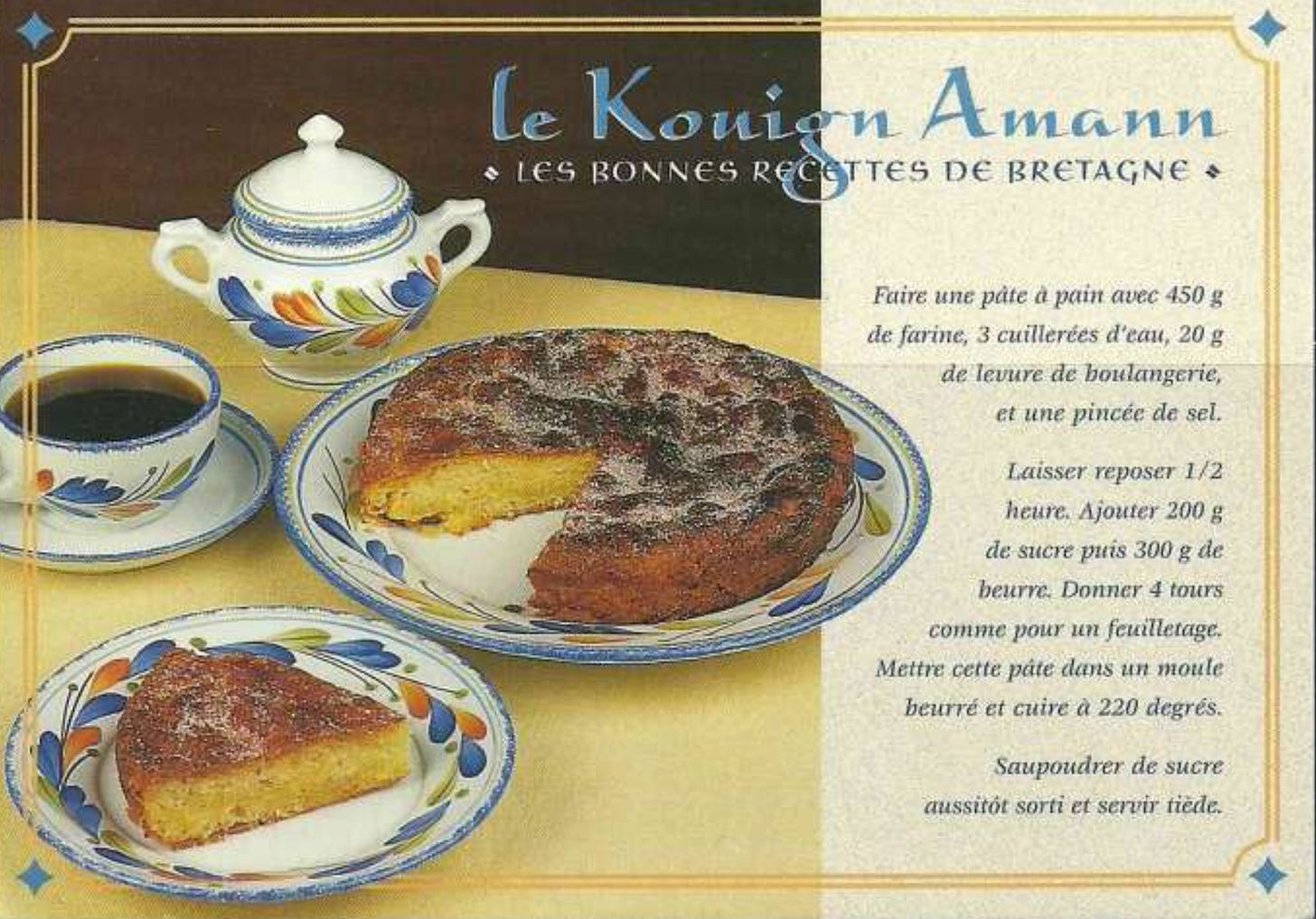
Whoever wrote this up assumes that people know how to faire une pâte (make a dough), and there’s no, now-familiar, “In a stand mixer fitted with a paddle attachment, mix the flour, water, yeast and salt….” Now you need to add what kind of flour, the temperature of the water, if you could substitute instant yeast (and if so, how would that change the reposer (resting) part of the recipe, as well as if you should use table salt, or kosher salt. And if using kosher salt, if you should use more or less, if using Morton’s versus Diamond Crystal. Oh…and if you could cut the butter and/or sugar in half.
For the folding and rolling of the dough four times, it merely says to do it, “comme pour un feuilletage,” or “like puff pastry,” as if people are going to know what you’re talking about. Maybe I sound like a grouchy old man, but as a recipe writer, I wouldn’t mind going back to the old days! Imagine all the free time I’d have…😉
Back in the day, I wrote a few articles for Bon Appétit and Cooking Light magazines. When the magazines were published, my detailed instructions would be invariably reduced to, “Mix the first five ingredients in a mixing bowl, add the remaining ingredients” by the editors. In magazines and newspapers, page space = money (ad revenue), so the objective was to be as concise as possible. (The NYT writers save space by not using Oxford commas, as all those pesky commas take up $pace.)
When I moved to Europe and continued writing cookbooks, at the time, almost all U.S. publishers didn’t want to include metrics as it made the recipes look too complicated. (Rose Levy Beranbaum was a champ and included all three systems of measurements for her recipes printed in a grid format, but her wrists must be killing her.) Some publishers and authors had conversion tables in the back of their books, which was one way to include them.
After my first two books, I offered recipes in metrics, as well as cups and tablespoons. I thought it would be great to do that since the internet is so global, and I’m trying to be as worldly as possible, although sometimes my best intentions come back to bite me in the butt as I’ve had people challenge my conversions.
Yes, I know King Arthur says 1 cup of flour = 120g (…with thanks to all those who’ve sent me that over the years), but their flour is higher in protein (strength) than standard all-purpose flour. My conversion is 140g, which is close to Dorie Greenspan…
…and Rose B. who goes by 135g per cup of flour. And I don’t want to risk my professional friendships with Dorie and Rose to quibble over 4-5 grams of flour.
Then there are premium ingredients, like European-style high-fat butters and high-percentage chocolates, and people have asked me to include instructions and conversions for using those, too. While the internet offers unlimited bandwidth for writing recipes, my head (and hands) can only do so much.
But it was interesting when someone asked me about egg weights recently. I don’t weigh eggs and suspect that’s a level of fussiness that’s a lot to ask for from home cooks. If I offered up a recipe that called for “51 grams of egg” that would mean you’d have to break an egg into a bowl, beat it with a fork, then weigh out 51 grams of eggs in a separate bowl. I don’t know about you, but no thanks.
Actually, I did want to know about you, so I put the question to people on Instagram, and the 344 comments were…interesting!
While people were all over the place, with many wanting egg weights, saner heads prevailed with people relieved for them to remain as “2 large eggs.” So the conclusion for me still stands: Asking people to weigh eggs, and then fielding questions about all the differences in egg sizes and weights and standards around the world, isn’t a mission I’m willing to take on. But I was interested in knowing the differences in egg sizes, at least in France. So the next time I went to the supermarché, I bought a carton of moyen (medium) eggs, and a carton of gros (large), and weighed a few.
But before doing that, I took a look at some egg sizing standards from various countries and continents, and found these:
U.S.
Medium egg: 50g
Large egg: 57g
U.K.
Medium egg: 53-63g
Large egg: 63-73g
Europe
Medium egg: 53g
Large egg: 63g
Australia
Medium egg: 43g
Large egg: 52g
The official French government website says:
Medium : pour les œufs moyens d’un poids supérieur ou égal à 53g et inférieur à 63g — which is between 53g and 63g
Large: les gros œufs d’un poids supérieur ou égal à 63g et inférieur à 73g — which is between 63g and 73g
Note that most of those are all minimum weights, and the main reason I posted about the variation in sizes in French eggs was because I had a few cartons in front of me and visually, there is a noticeable difference in the size of the eggs even in the same carton…
On that point, the two eggs above were in the same “medium” carton; the one on the left was 55g and the other was 65g.
The eggs in the medium carton weighed between 43 and 46 grams, and the large eggs weighed between 61 and 70 grams, which doesn’t quite correspond to the official sizes in France. So perhaps there’s a scandal whipping up in the French world of œufs.

I think no one complains if they get more egg for their money, unless they are slavishly following a recipe, which is why in professional bakeries they sometimes add eggs by weight or volume (unshelled), whereas home cooks curse the author of a recipe that calls for 104 grams of eggs.
I’ve been wrangling with a chocolate tart recipe I want to share in the newsletter. It’s one I’ve been thinking about for 12 years (or 4,383 days, if you’re one of those folks who does want things more detailed), ever since I had it at a restaurant in Paris. When I finally found the recipe in the chef’s cookbook, I could tell it would need some tweaks to get it to work.
Unfortunately, that’s typical in many chefs’ books. As someone told me when I mentioned I was having trouble with it, they said, “Of course it doesn’t work. The chef’s not going to give away his recipe!”
I made the recipe four times and am going to give it a fifth try, to get it just right. While I was lying awake at night trying to figure out how to make his recipe work, a thought came to me: “Wait. I used to make a similar recipe when I was baking professionally…”
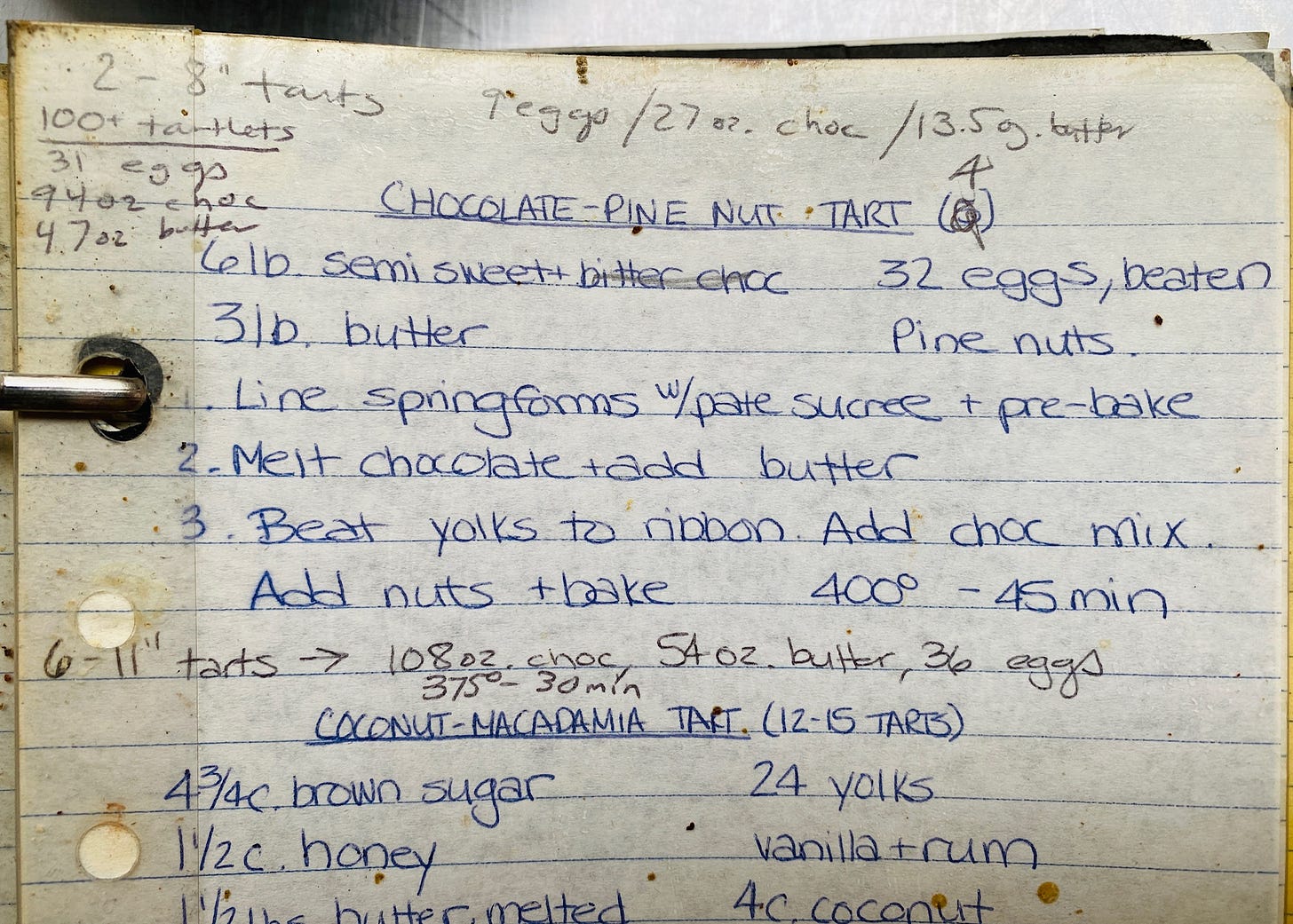
As you can see in the margins, for whatever reason, I whittled it down from four tarts (baked in 9-inch/23cm springform pans, as the tarts were quite lofty) to “two 8-inch” tarts,” and “100+ tartlets,” as well as below the original recipe, “six 11-inch tarts.”
If the recipe was originally in volume or weight for the liquid (cracked, out-of-shell) eggs, it just might have been easier to scale up or down. But somehow, math-challenged me was able to figure it out. So I’m moving forward to the final try of the chocolate tart recipe, which will be test #5. I think I’ve got it by now, but want to give it one last crack.



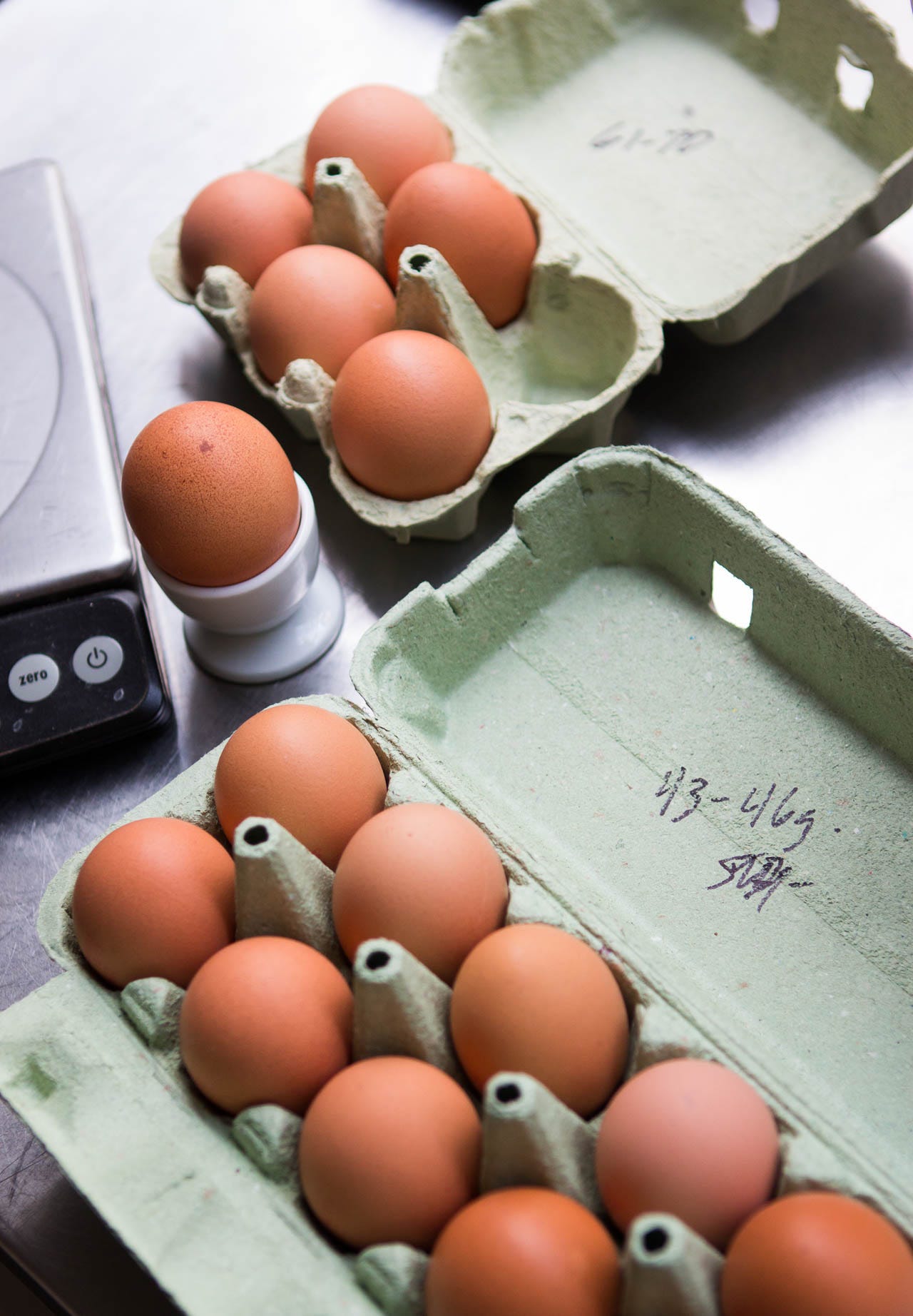

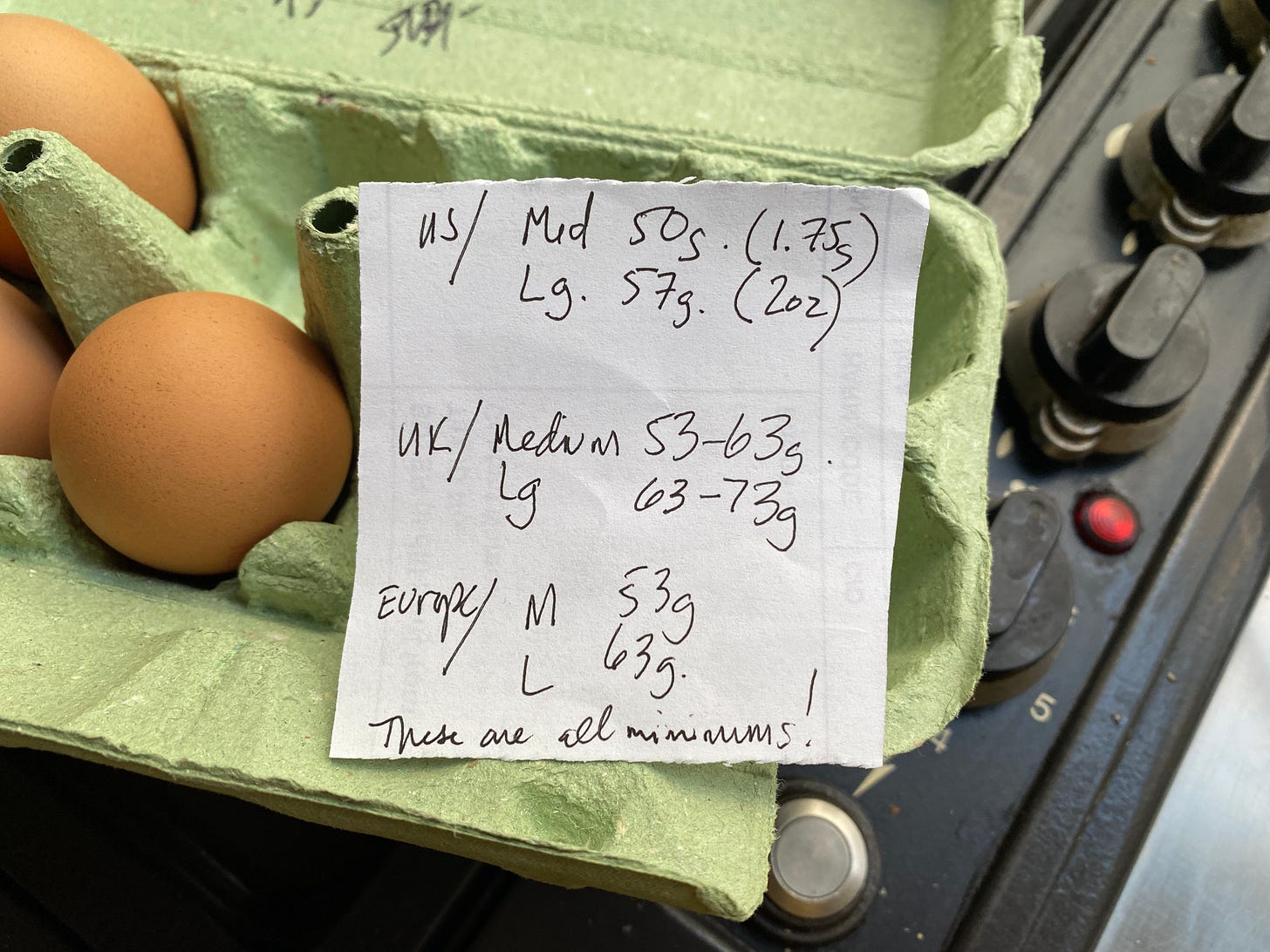


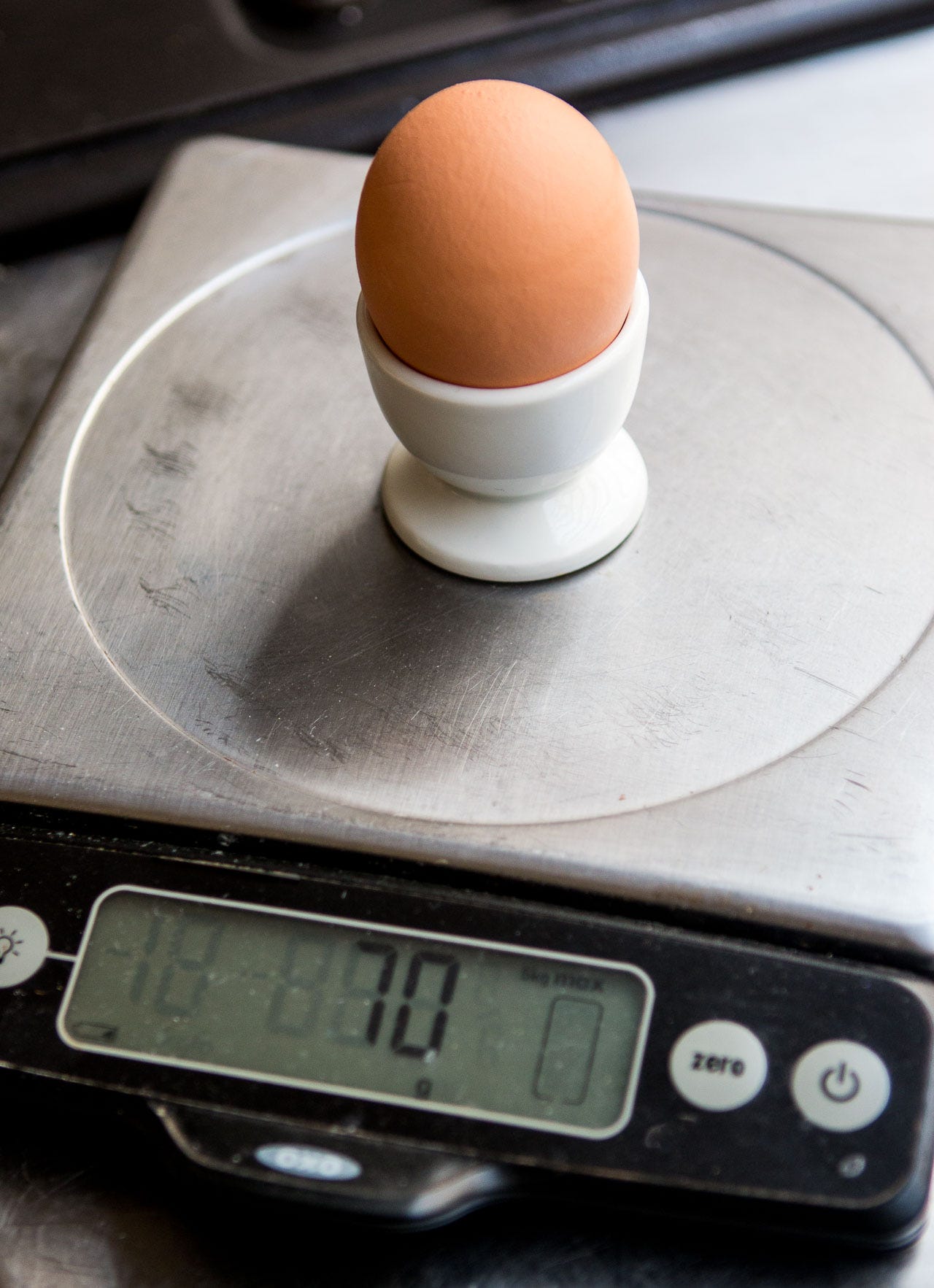
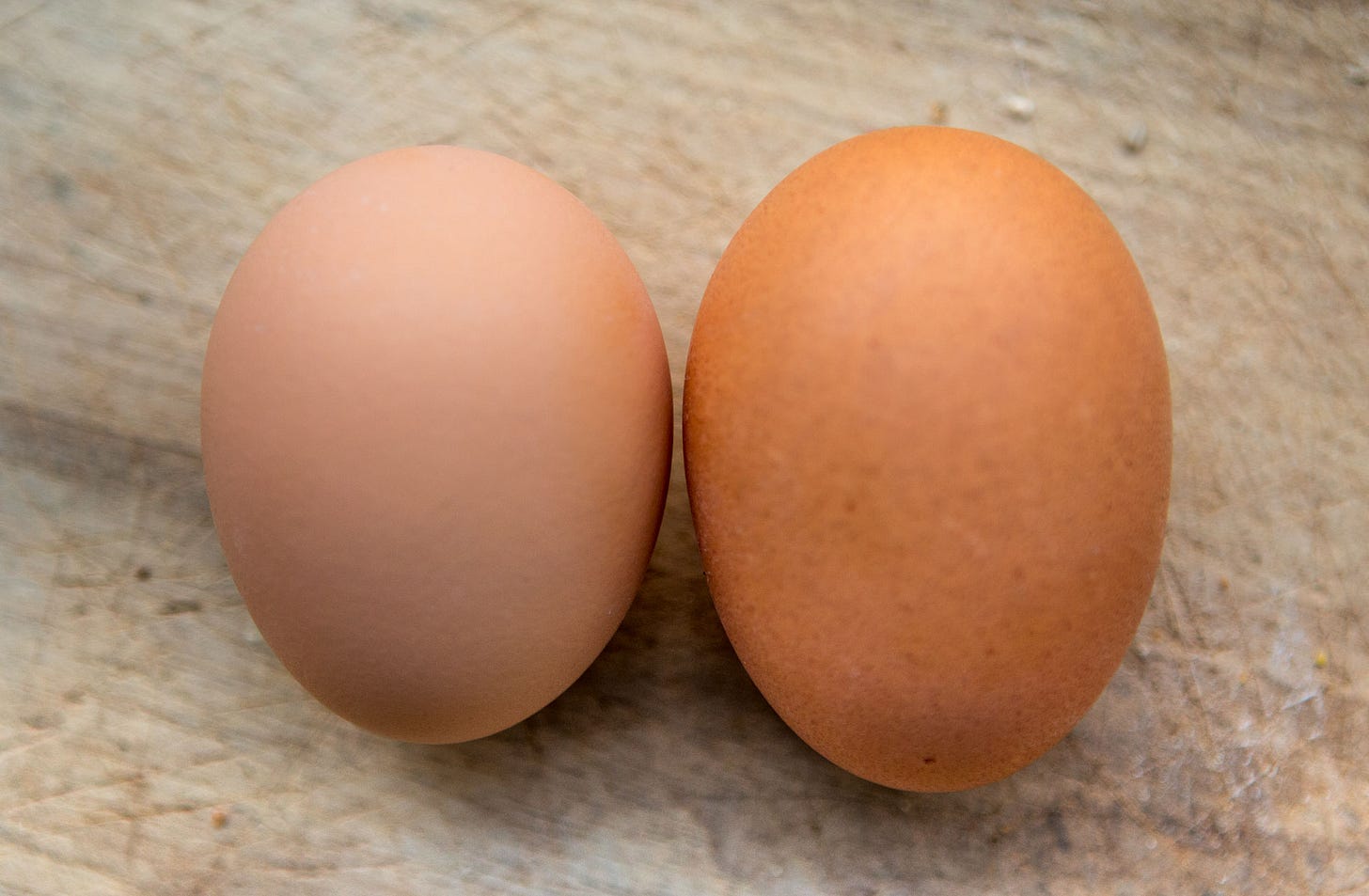
Having moved eight years ago from the US, I thought it would be a challenge to adjust my 70 year old mind to metric measurements. Not so! I began sewing curtains for my new (very old) house and found it actually easier and when I began, during the lockdown, baking sourdough bread, etc. I fell in love with my kitchen scale. I guess you can teach an old…
Hi Mr Lebovitz! (My “generational upbringing”) One of the best articles yet. I discovered the issue of egg sizes several years ago after purchasing some cookbooks not from US authors or publishers. At first, the research made my head spin. Now I go by instinct (experience) & taste. Thank you for a thoroughly entertaining article on many levels!
Jean H.